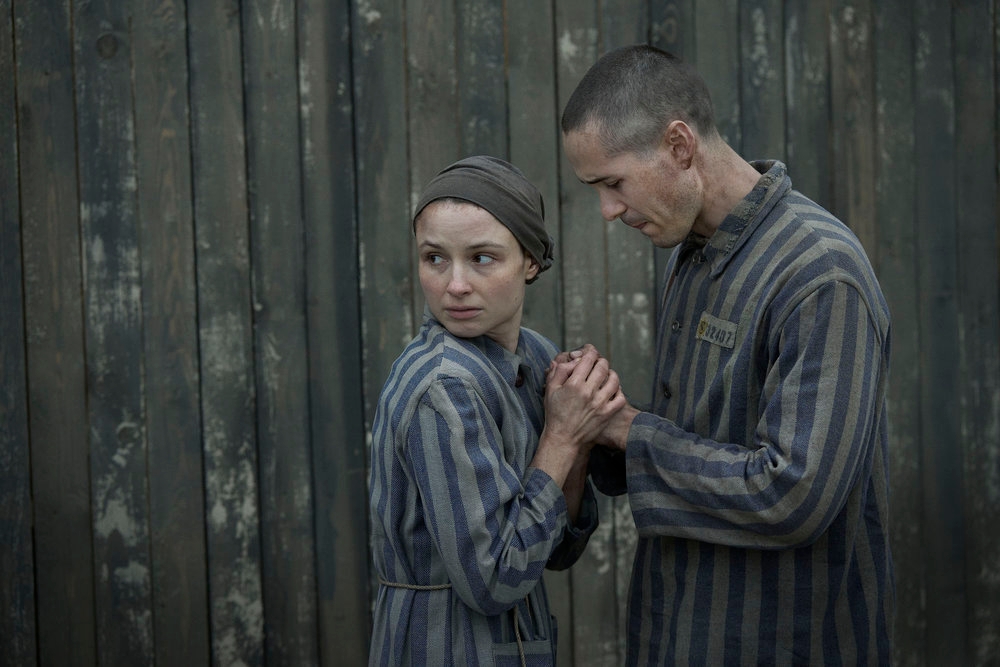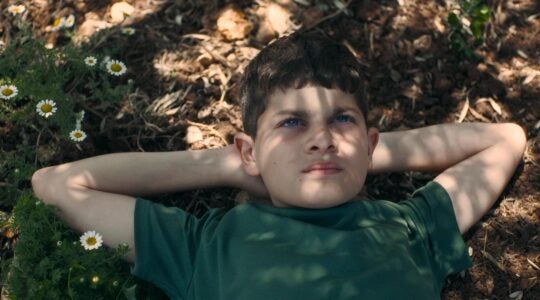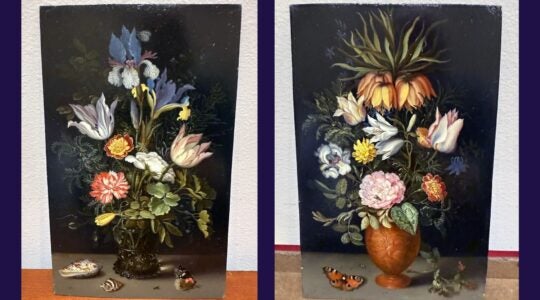(JTA) — A Holocaust romance, sparked when a prisoner at Auschwitz-Birkenau is forced to tattoo a number on another prisoner’s arm and they fall in love at first sight, sounds almost implausibly uplifting for a story set in a concentration camp.
But “The Tattooist of Auschwitz,” a new television series, is based on two Slovakian Jewish prisoners — Lali Sokolov and Gita Furman — who really did meet at Auschwitz, survive, marry and move to Australia together after the war. The six-part drama premiering May 2 on Peacock and Sky draws from a 2018 novel of the same name by Heather Morris, who interviewed Sokolov over three years before his death in 2006.
“It’s what drew me in, when I read the book a few years ago — that something like this could happen was so surprising,” Jonah Hauer-King, who plays young Lali at Auschwitz, told the Jewish Telegraphic Agency. “Any kind of love at first sight is surprising, let alone in a context like this.”
Alongside Hauer-King, known for his role as Prince Eric in Disney’s live-action “The Little Mermaid,” Academy Award nominee Harvey Keitel plays Lali’s older counterpart in his late 80s, recounting his experiences to Morris (Melanie Lynskey) from his home in Melbourne shortly after Gita (Anna Próchniak) has died.
Directed by Tali Shalom-Ezer and executive produced by Claire Mundell, the series will also feature an end-title song by the legendary Jewish artist and EGOT holder Barbra Streisand. “Love Will Survive” is Streisand’s first recording for a TV series, set to release on April 25 ahead of the series premiere.
“Because of the rise in antisemitism around the world today, I wanted to sing ‘Love Will Survive’ in the context of this series, as a way of remembering the six-million souls who were lost less than 80 years ago,” Streisand said in her announcement. “And also to say that even in the darkest of times, the power of love can triumph and endure.”
“The Tattooist of Auschwitz” joins a crop of World War II-period TV series inspired by buzzy bestselling novels. Hulu recently launched “We Were the Lucky Ones,” based on Georgia Hunter’s 2017 novel about her Jewish family’s dispersion across the world. And in just the past year, Netflix adapted “All the Light We Cannot See” from Anthony Doerr’s 2014 war novel and aired “Transatlantic,” about Varian Fry’s mission to rescue Holocaust refugees, based on Julie Orringer’s 2019 book “The Flight Portfolio.”
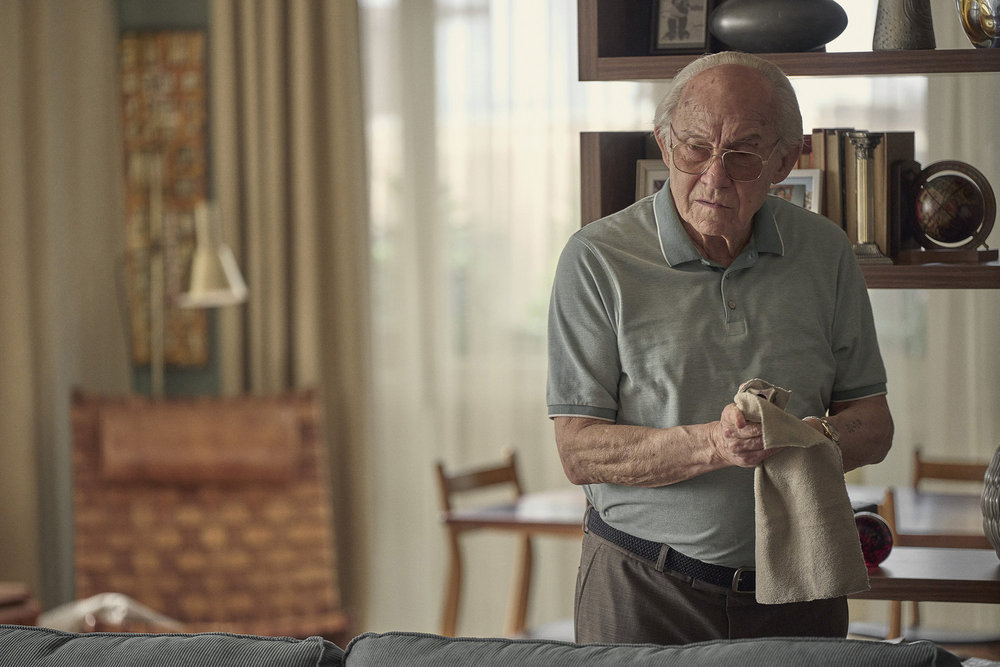
Harvey Keitel plays the elderly Lali Sokolov, depicted here in his Melbourne apartment, in “The Tattooist of Auschwitz. (Martin Mlaka/Sky UK)
Like the other networks, Peacock has billed its series as “inspired by the real-life story,” with the added interest of a real-life romance “in the most horrific of places.” But preserving the authenticity of Lali’s story in a TV show, based on a novel that fictionalized his testimony 12 years after his death, comes with a new set of challenges — especially when the novel was critiqued for inaccurately portraying life in Auschwitz.
Morris’s “The Tattooist of Auschwitz” raised eyebrows from the Auschwitz Memorial in 2018, which said the book “cannot be recommended as a valuable position for those who wish to understand the history of the camp” and is “almost without any value as a document.”
A report from Wanda Witek-Malicka of the Auschwitz Memorial Research Center said the book’s “based-on-facts” marketing, combined with its international success — selling over 12 million copies with translations into more than 40 languages — raised concern that many readers might treat it as a historical source on the realities of Auschwitz, despite several errors and misleading representations.
These inaccuracies include the number that Lali was forced to tattoo on Gita’s arm in the story’s pivotal scene. In the book, she is branded with the number 34902, but Gita herself said in a testimony to the USC Shoah Foundation that her number was 4562, a claim supported by evidence from the Auschwitz Memorial.
Witek-Malicka also disputed a plot line in which Lali obtains penicillin for Gita’s typhus in January 1943, saying this event was “impossible” because penicillin only became readily available after the war. Elsewhere, the book depicts a revolt by the “Sonderkommando,” predominantly Jewish prisoners who were forced to work in the gas chambers and crematoriums. Though the Sonderkommando did revolt at Auschwitz in 1944 and set fire to one crematorium, the book says they blew up two.
The sexual relationship between an SS commander and a Jewish prisoner in the book also raised questions for Witek-Mailcka, who said the possibility of such a long-term relationship was “non-existent.” She also pointed out that the building where the characters supposedly rendezvoused was only completed in January 1945 and never put into use.
Meanwhile, Lali’s son Gary told the New York Times he was bothered to see his father’s name misspelled “Lale” in the book.
Some of these inaccuracies have been corrected in the TV series, which depicts Gita’s original number and corrects the spelling of Lali’s name. But Shalom-Ezer told JTA that she relied heavily on the judgment of Morris, who worked as a story consultant for the show.
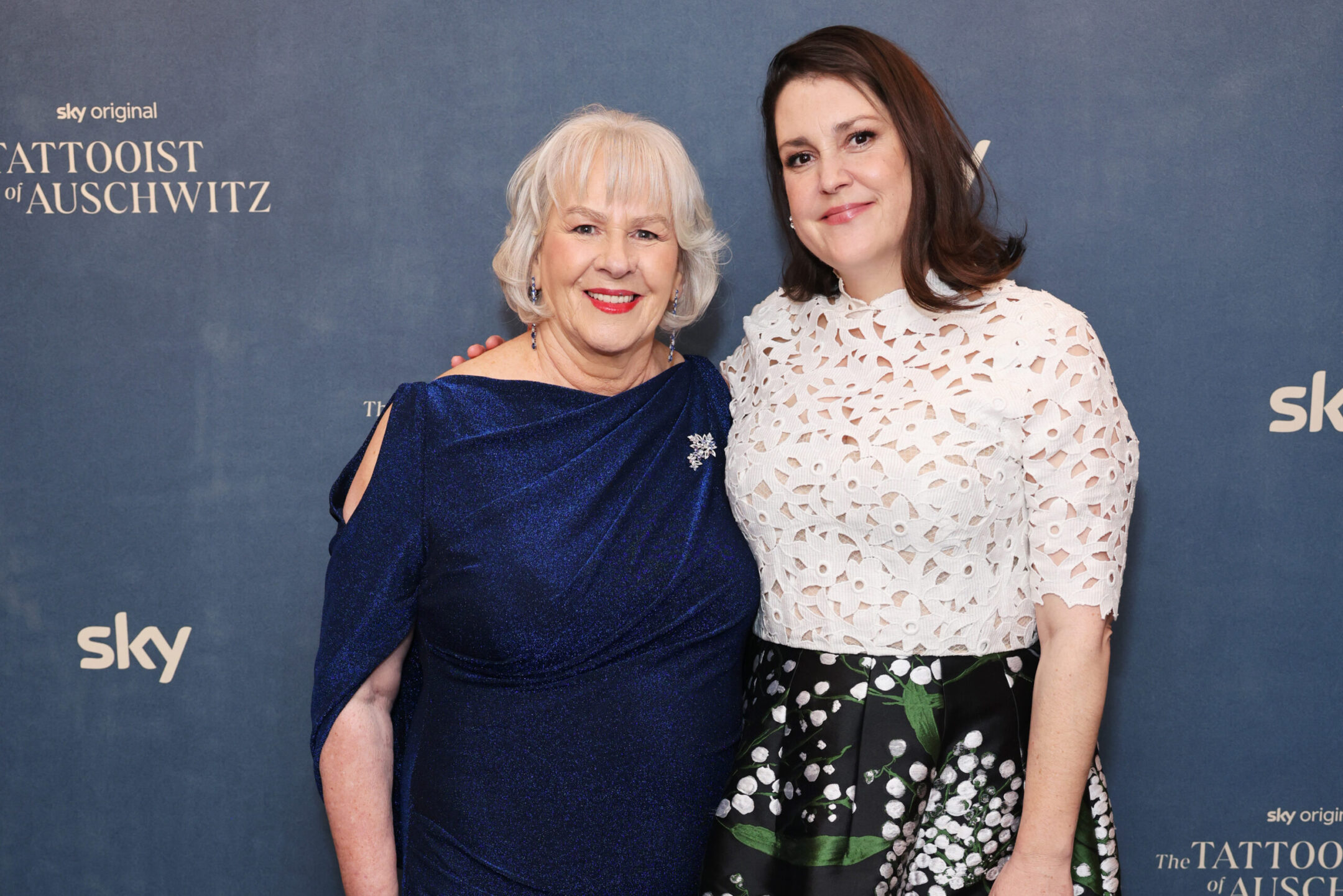
Author Heather Morris and actress Melanie Lynskey attend the Gala Screening of Sky Original “The Tattooist Of Auschwitz” at BAFTA on April 9, 2024 in London. (Dave Benett/Getty Images for Sky)
“Heather devoted her life to this,” Shalom-Ezer told JTA. “I’m not just talking about the last three years of Lali’s life, when she spent three times a week sitting with him for hours, listening to his story — all the 11 years it took her to find a publisher for the book and even later, she just devoted herself to this. So I felt confident enough that I believe her, that she’s trying to tell us the story in the most genuine way she can, as close as possible to his truth.”
Morris herself has said that she did not aim to write an academic historical account, only to share Lali’s memories of his life.
“It is Lali’s story,” she told the New York Times in 2018. “I make mention of history and memory waltzing together and straining to part, it must be accepted after 60 years this can happen but I am confident of Lali’s telling of his story, only he could tell it and others may have a different understanding of that time but that is their understanding, I have written Lali’s.”
In its TV form, “The Tattooist of Auschwitz” nods to the fickle nature of memory, particularly the memory of a traumatized person. Sometimes the viewer sees one version of events — for example, Lali discovering that a younger friend was selected for the gas chamber at random — and then the older Lali remembers a different story, in which his own number was on that selection list, only changed to his friend’s after the Nazis employed Lali as a tattooist.
The character Lali shares some of these revisions with the character Morris. Others come to him after she has left, when he is alone and haunted by the dead who occupy his kitchen at night. The series shows Lali talking to these ghosts, bargaining with his memory and making deals with the guilt of survival.
“I think that this is the nature of trauma, it creates a kind of dissociation from what happened so you cannot really remember it correctly,” said Shalom-Ezer. “So the team and I, we thought that this is the most authentic way to portray a man with a trauma that for the first time is trying to share his story with someone.”
JTA has documented Jewish history in real-time for over a century. Keep our journalism strong by joining us in supporting independent, award-winning reporting.
